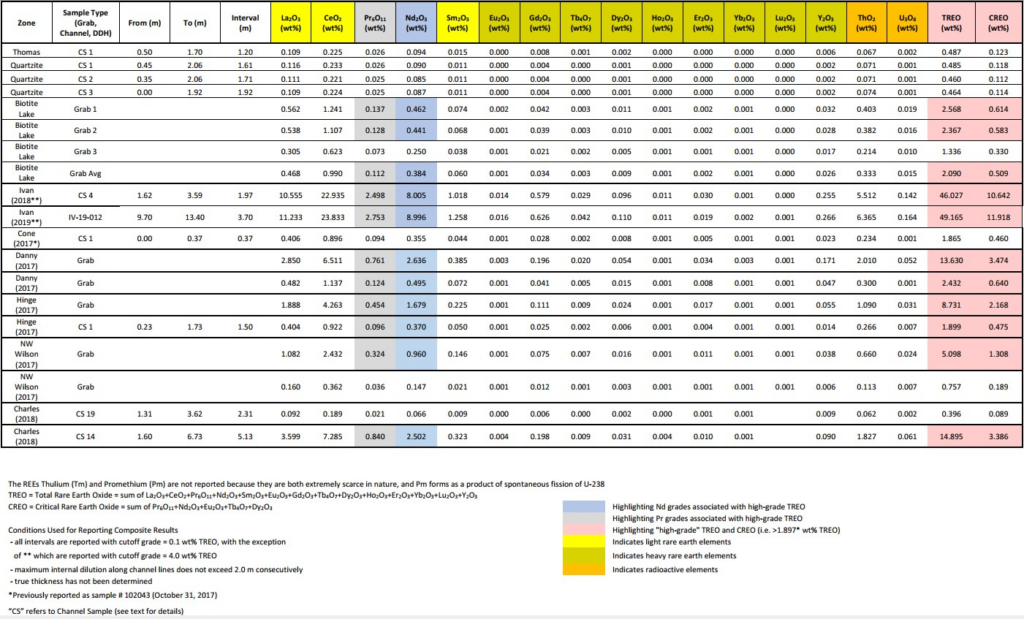Toronto, Ontario–(Newsfile Corp. – November 20, 2019) – Appia Energy Corp. (CSE:API) (OTCQB: APAAF) (FSE: A0I.F) (FSE: A0I.MU) (FSE: A0I.BE) (the “Company” or “Appia) is pleased to announce the findings from the prospecting program, including assay results from channel and grab samples collected during the 2019 Summer exploration program (the “Program“) on the Alces Lake property (the “Property“), northern Saskatchewan (see Table 1 for assay results). The Property is host to some of the highest-grade rare earth element (“REE“) discoveries in the world, including 49.16 wt% Total Rare Earth Oxide (“TREO“) over 3.7 metres (“m“) less than 10 m from surface in drill hole IV-19-012 (see News Release – September 3, 2019) and 46.03 wt% TREO over 1.97 m at surface (see News Release – November 8, 2018 as reissued and re-filed on www.sedar.com on January 9, 2019).
In addition to the recently reported diamond drill program results (see News Release – November 05, 2019), Appia completed prospecting which led to the discovery of eight new surface outcrop zones* and showings* with characteristics of the rare earth element mineralization system (the “System“) including visible monazite. The new discoveries have expanded known surface REE mineralization within an area measuring over 500 m by 500 m, and the Biotite Lake discovery has extended the 500 m footprint to over 1.8 km (Figure 1).
The contacts of the zones and showings remain covered by overburden and therefore have not been fully exposed. Three zones were sampled during the Program (Biotite Lake, Quartzite and Thomas), one zone was sampled in 2017 (Cone), and four showings remained unsampled. The zones and showings are described below:
- Biotite Lake zone: average of 2.090 wt% TREO from 3 grab samples from 1.336 wt% TREO to 2.568 wt% TREO reported. The Biotite Lake zone occurs in 2 parts, each 8 m long and up to 1.5 m wide, with the middle of the zone covered by overburden. The zone is located 1.8 km west of the Wilson Zone, and represents the most distal high-grade REO occurrence discovered on the property by Appia to-date. Visible monazite was reported.
- Quartzite zone: a range of 0.460 to 0.485 wt% TREO from 3 channel sample lines. The Quartzite zone occurs in 2 parts with an overall estimated length of 42 m, the middle of which is currently covered by overburden, and up to 2.0 m wide. The Quartzite zone is located 145 m north of the Dante zone and is the second longest surface zone after the Wilson zone. Visible monazite was reported.
- Thomas zone: 0.487 wt% TREO over 1.2 m channel sample length. The Thomas zone was exposed over 7.5 m long and up to 1.2 m wide before losing its contacts beneath the overburden. The zone is located 55 m northwest of the Dante zone. Visible monazite was reported.
- Cone zone: 1.865 wt% TREO over 0.37 m channel sample length from 2017 (see News Release – October 31, 2017). The Cone zone was exposed over 6.5 m length and 0.4 m wide, and the zone dips into a cliff face. The zone is 25 m northwest of the Wilson zone. Visible monazite was reported.
- Danny zone extension: additional outcrops were discovered in and around the Danny zone (discovered in 2017) but due to thick overburden, the outcrops were not fully exposed. The Danny zone now measures 60 m by 45 m. The new showings were not sampled but outcrop grab samples from the Danny zone in 2017 returned between 2.432 and 13.630 wt% TREO (see News Release – October 31, 2017).
- Stan zone showings: three outcrop showings were located between 100 and 135 m east of the Danny zone and southwest of the Wilson zone. The showings remain mostly obscured by overburden and were not sampled.
- Jason zone showings: three outcrop showings were located along a cliff face 55 to 125 m northwest of the NW Wilson zone and 130 to 200 m southeast of the Hinge zone. The showings were not sampled. Samples collected from the Hinge zone in 2017 returned between 1.899 and 8.731 wt% TREO (see News Release – October 31, 2017), whereas samples returned from the NW Wilson zone in 2017 returned between 0.757 and 5.098 wt% TREO (see News Release – October 31, 2017).
- Bo zone showings and Mikaela zone: five outcrop showings were hand-dug through overburden to expose mineralized outcrops at shallow depths between 25 to 35 m north and west of the Charles and Bell zones. The showings were not sampled however channel samples from the Charles zone in 2018 returned 0.396 wt% TREO over 2.31 m up to 14.895 wt% TREO over 5.13 m (see News Release – September 18, 2018).
* “Zone” refers to the mineralized system exposed over at least 5.0 m long in at least one direction within an outcrop. “Showing” refers to the mineralized system exposed under 5.0 m long in at least one direction within an outcrop, and mostly occur as small exposed outcrop windows of less than 1.0 m.
True thickness has not been determined for each of the intervals mentioned, including those in Table 1.
Mr. James Sykes, Appia’s Vice-President, Exploration and Development, comments: “The discovery of these new zones demonstrates that the System is extensive beneath the overburden. The Biotite Lake discovery shows that the REE mineralization system within the Alces Lake area is far more wide-spread than previously thought. These discoveries have provided us with new target areas for upcoming exploration, and the geological controls of these zones will help with our overall understanding of the System. We continue to discover more surface mineralization beneath the overburden with each work program. These “blind” discoveries highlight the surface and near-surface potential for additional high-grade REE zones, increasing the economic potential of the Alces Lake REE system. In many areas, we have observed low-grade TREO halos surrounding high-grade TREO bodies, therefore the discoveries at the Quartzite and Thomas zones could potentially lead us to nearby near-surface high-grade REE bodies. Our surface prospecting along the radiometric highs (pink in Figure 1) show a positive correlation with known surface discoveries, thus a large number of surface radiometric targets still require follow-up. We are excited for next year’s prospecting with the confidence that we will discover (and uncover) many more high-grade TREO surface zones.”
In the coming weeks, the Company will be initiating academic studies with universities in Europe and North America to help better understand the origin(s) and source of the System (see News Release – November 5, 2019, for details).
The Alces Lake Property encompasses some of the highest-grade total and critical REE mineralization in the world, hosted within numerous surface and near-surface showings to which the depth extent remains unknown. Critical REE are defined here as those that are in short-supply and high-demand for use in permanent magnets and modern electronic applications (i.e.: Neodymium (Nd), Praseodymium (Pr) and Dysprosium (Dy)). The project area is 14,334 hectares (35,420 acres) in size and is 100% owned by Appia.
Appia considers “high-grade” REE mineralization to be >1.897 wt% TREO, which represents >75th percentile for global rare earth oxide (“REO“) deposit grades of advanced stage projects (excluding the Gakara, Steenkampskraal and Mount Weld CLD deposits). The global REO deposit information was derived from publicly available information as of January 31, 2018, from individual company websites, SEDAR technical report filings, and the Technology Metals Research Advanced Rare Earth Projects Index (http://www.techmetalsresearch.com/metrics-indices/tmr-advanced-rare-earth-projects-index/)
All channel samples (“CS“, refer to Table 1) were removed from outcrops using a cut-off saw, and hammer and chisel. The samples were cut one inch thick and deep in individual segments ranging from 0.38 m to 1.03 m along the reported distance. The sample distances and mineralization continuity were limited to visible and accessible outcrop exposures ie: all sampled outcrops either i) disappeared under thick vegetation cover, ii) dipped below the overburden, or iii) the terrain proved to be too difficult to continue sampling. Grab samples were individual fist-sized samples removed from outcrops using a hammer and chisel.
All assay results were provided by Saskatchewan Research Council’s (“SRC“) Geoanalytical Laboratory, an ISO/IEC 17025:2005 (CAN-P-4E) certified laboratory in Saskatoon, SK, for multi-element and REE analysis. The REE analysis uses a lithium metaborate fusion to dissolve refractory minerals, such as monazite
All analytical results reported herein have passed rigorous internal QA/QC review and compilation. The technical content in this news release was reviewed and approved by Dr. Irvine R. Annesley, P.Geo, Advisor to Appia’s Board of Directors, and a Qualified Person as defined by National Instrument 43-101.
About Appia
Appia is a Canadian publicly-traded company in the uranium and rare earth element sectors. The Company is currently focusing on delineating high-grade critical rare earth elements (“REE”) and uranium on the Alces Lake property, as well as prospecting for high-grade uranium in the prolific Athabasca Basin on its Loranger, North Wollaston, and Eastside properties. The Company holds the surface rights to exploration for 57,048 hectares (140,968 acres) in Saskatchewan.
The Company also has a 100% interest (subject to a 1% Uranium Production Payment Royalty and a 1% Net Smelter Return Royalty on any precious or base metals payable, provided that the price of uranium is greater than US$130 per pound) in 12,545 hectares (31,000 acres), including rare earth element and uranium deposits over five mineralized zones in the Elliot Lake Camp, Ontario, which historically produced over 300 million pounds of U3O8 and is the only Canadian camp that has had significant rare earth element (yttrium) production. The deposits are largely unconstrained along strike and down dip.
Appia’s technical team is directed by James Sykes, who has had direct and indirect involvement with over 550 million lbs. U3O8 being discovered in five deposits in the Athabasca Basin.
Appia has 65.3 million common shares outstanding, 85.2 million shares fully diluted.
Cautionary Note Regarding Forward-Looking Statements: This News Release contains forward-looking statements which are typically preceded by, followed by or including the words “believes”, “expects”, “anticipates”, “estimates”, “intends”, “plans” or similar expressions. Forward-looking statements are not guarantees of future performance as they involve risks, uncertainties and assumptions. We do not intend and do not assume any obligation to update these forward- looking statements and shareholders are cautioned not to put undue reliance on such statements.
Neither the Canadian Securities Exchange nor its Market Regulator (as that term is defined in the policies of the CSE) accepts responsibility for the adequacy or accuracy of this release.
For further information, please contact:
Tom Drivas, President, CEO and Director: (tel) 416-546-2707, (fax) 416-218-9772 or (email) appia@appiaenergy.ca
James Sykes, VP Exploration & Development, (tel) 306-221-8717, (fax) 416-218-9772 or (email) jsykes@uraniumgeologist.com
Frank van de Water, Chief Financial Officer and Director, (tel) 416-546-2707, (fax) 416-218-9772 or (email) fvandewater@rogers.com
TABLE 1 – LITHOGEOCHEMICAL RESULTS FOR NEW SURFACE DISCOVERIES

*Note: >1.897 wt% TREO represents >75th percentile for global REO deposit grades of advanced stage-projects (excluding Gakara, Steenkampskraal and Mount Weld CLD deposits). The global REO deposit information was derived from publicly available information as of January 31, 2018, from individual company websites, SEDAR technical report filings, and the Technology Metals Research Advanced Rare Earth Projects Index (Click Here)




